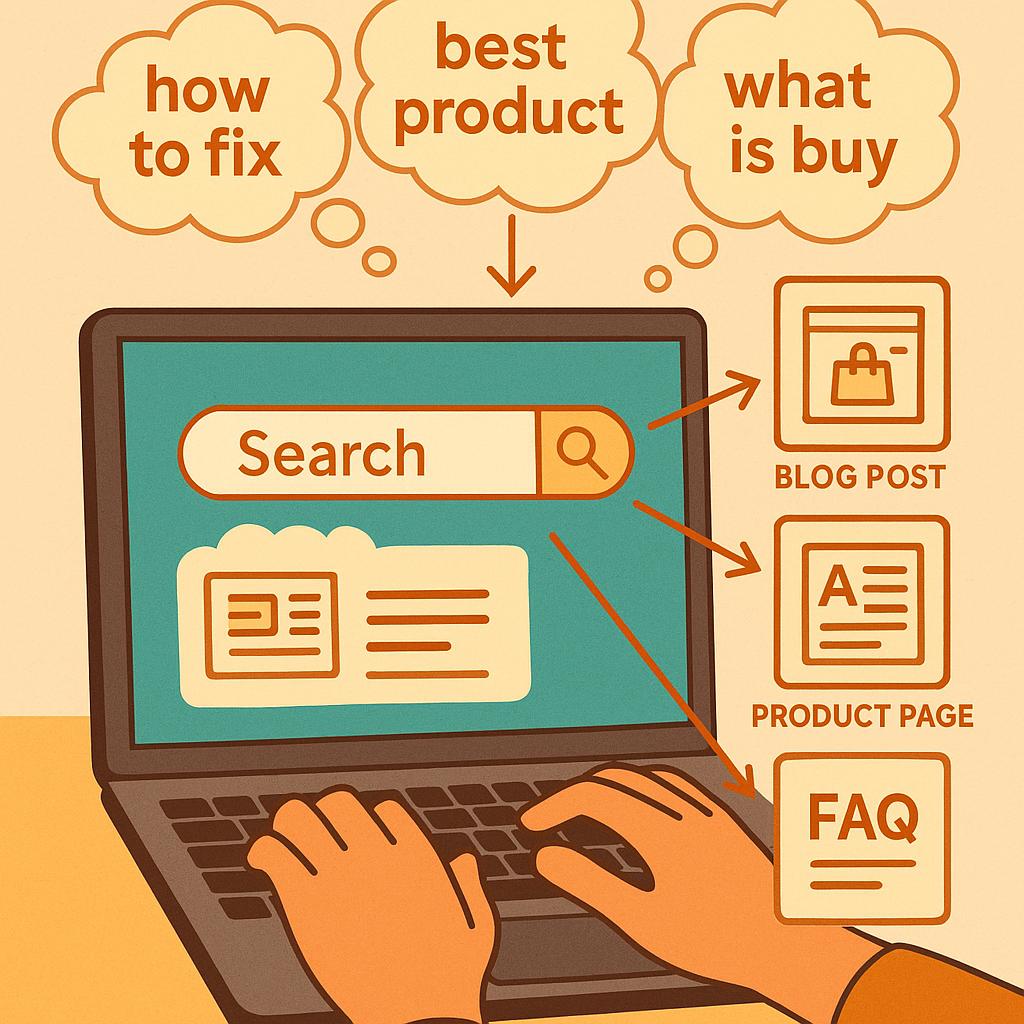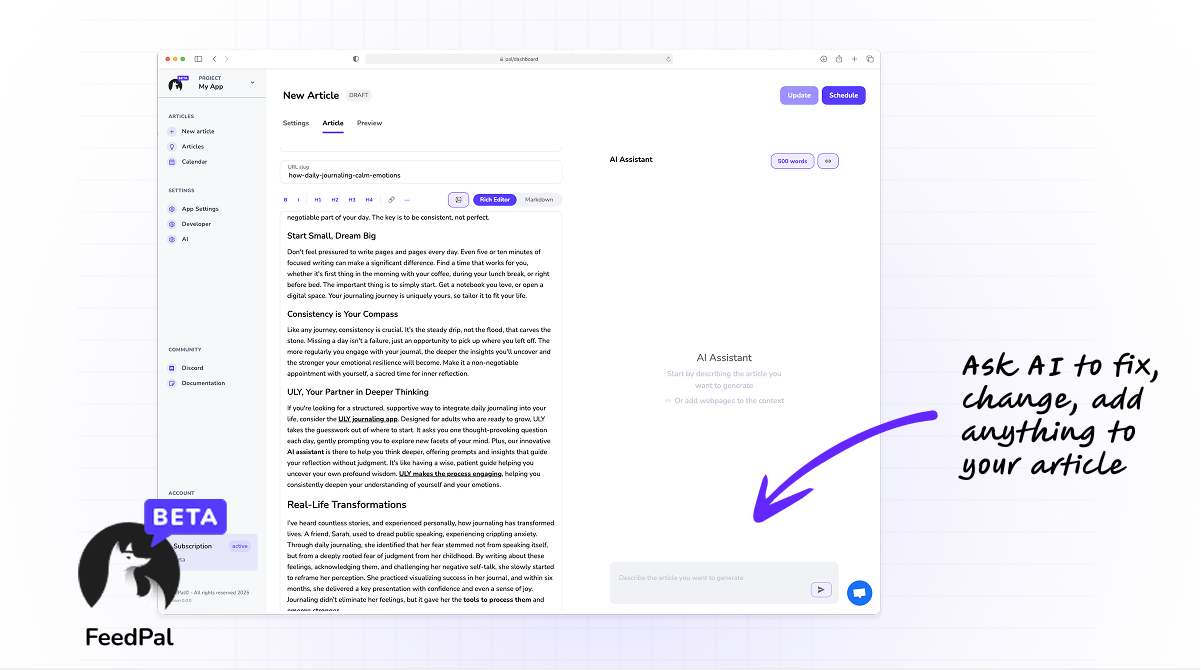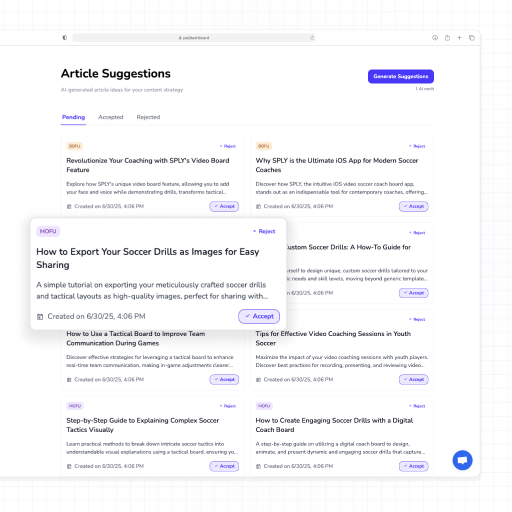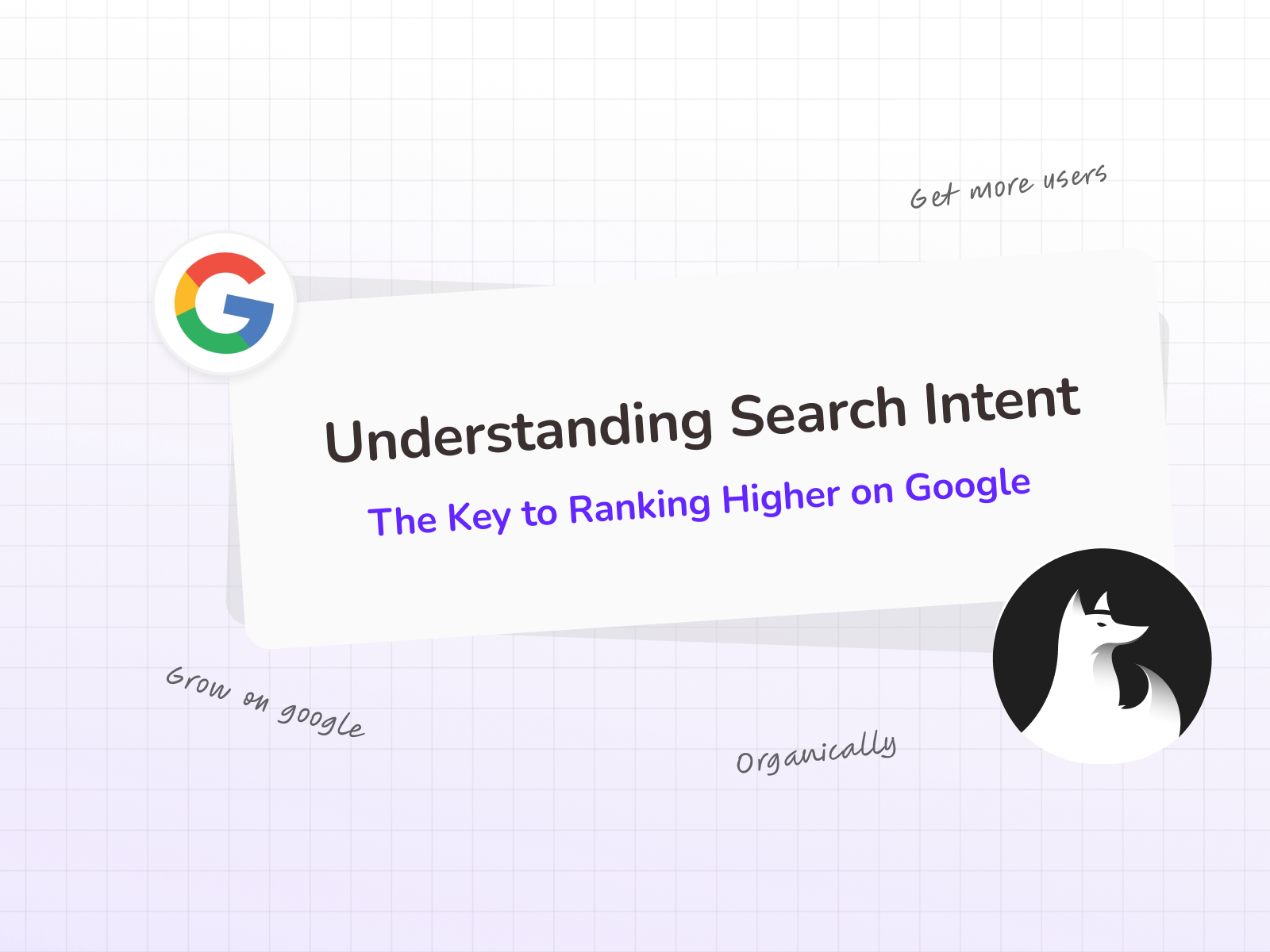You don't only need to write content. You need to understand why people comes on your website and what were they searching. It's about really digging into the 'why' behind every visit. That's what we call search intent.
Imagine, for a moment, that you’re setting out on a road trip. You wouldn’t just jump in the car and drive aimlessly, would you? No, you'd have a destination in mind. Search intent is exactly like that for your online content.
That potential customer? They'll just stay out of reach. It's a foundational strategy to truly boost your presence on search engines.

What Exactly is Search Intent, and Why Does It Really Matter for Your Business?
Simply put, search intent boils down to the main thing someone genuinely hopes to achieve when they type a query into a search engine. Are they just looking for some quick facts? Maybe they're trying to find a specific website. Or, perhaps they're really ready to buy something. Google's algorithms? They're incredibly smart, built to grasp all these subtle nuances. They often lean on powerful methods like Schema Markup to get a much clearer read on content.
First, it dramatically improves your visibility on search engines.
Google wants to provide the best, most relevant answer to a user's query. If your content perfectly aligns with that user's hidden "why," Google will reward you by pushing your content higher in the search results.
Second, it leads to higher engagement and better conversion rates. You're not just getting clicks, you're getting the right clicks. When visitors land on your page and find exactly what they were looking for, they're more likely to spend time on your site, read your content, and ultimately take the desired action, whether that's signing up for a newsletter, downloading a lead magnet, or making a purchase. This means less wasted marketing effort and a clearer path to growing your business.
Finally, focusing on search intent helps you build authority and trust with your audience. By consistently providing value that directly addresses their needs, you position your brand as a helpful, knowledgeable resource. This fosters loyalty, encourages repeat visits, and can turn casual browsers into customers.
The Four Types of Search Intent: Unlocking User Needs
To truly master search intent, we need to understand its main categories. Google broadly classifies search intent into four primary types. Each one represents a different stage in a user's journey and requires a different approach from your content.

1. Informational Intent
This is perhaps the most common type of search intent. Users with informational intent are looking to learn something, find an answer to a question, or understand a concept. They're in research mode, seeking knowledge.
- What it means: The user wants to expand their knowledge on a particular topic. They are looking for facts, explanations, instructions, or solutions to a problem. They are not necessarily ready to buy anything yet, but they might be at the beginning of their customer journey.
- Typical Keywords: Phrases often include words like "what is," "how to," "guide to," "examples of," "benefits of," "tips for," "why does," or specific questions. For example, "how to use AI to brainstorm blog topics," "what is SEO for startups," or "benefits of content automation."
- Best Content Types: Blog posts, detailed guides, tutorials, FAQs, definitions, expert articles, whitepapers, and infographics. Your goal here is to provide comprehensive, accurate, and easy-to-understand information that fully answers their query.
- FeedPal Connection: This is where FeedPal shines, helping you brainstorm those high potential informational topics that truly resonate with your audience's questions. It helps you write like a human, ensuring your complex information is digestible and engaging.
2. Navigational Intent
When a user has navigational intent, they already know exactly where they want to go, or they're looking for a specific website or page. They're using Google as a quick shortcut.
- What it means: The user intends to reach a specific website or a specific page within a website. They already have a destination in mind.
- Typical Keywords: These are usually brand names, product names, or specific page names combined with a brand. Examples include "FeedPal login," "your company name contact," "pricing page for [your product]," or "CNN homepage."
- Best Content Types: Your homepage, "about us" page, contact page, specific product or service pages, login pages, or any direct landing page for a known query. The key is clear site architecture and internal linking.
- Importance for SEO: While you won't rank for "Google.com" by creating a page, ensuring your own brand-specific pages are easily found for navigational queries is crucial for user experience and direct traffic.
3. Transactional Intent
This is where the rubber meets the road for sales. Users with transactional intent are ready to take action, whether that's making a purchase, signing up for a service, or downloading a resource.
- What it means: The user is ready to complete a transaction, make a purchase, subscribe to a service, or perform a specific action that leads to a conversion. They are at the very end of their decision-making process.
- Typical Keywords: Phrases often include terms like "buy [product name]," "pricing for [service]," "sign up for [trial]," "download [software]," "discount code," "order online," or "subscribe." For FeedPal, examples might be "FeedPal pricing," or "Sign up for FeedPal free trial."
- Best Content Types: Product pages, service pages, e-commerce listings, pricing pages, demo request forms, sign-up forms, and checkout pages. These pages need strong calls to action, clear benefits, and a smooth user experience to convert visitors.
- Your Goal: To remove all friction and make it super easy for the user to take that final step.
4. Commercial Investigation Intent
Often confused with transactional intent, commercial investigation intent lies somewhere between informational and transactional. Users here are researching products or services they might buy, but they haven't made a final decision yet. They're looking for comparisons, reviews, and detailed information to help them choose.
- What it means: The user is researching products or services with the intent to buy in the near future. They are comparing options, reading reviews, and trying to make an informed decision.
- Typical Keywords: Look for phrases like "best [product category]," "[product A] vs [product B]," "[product name] review," "alternatives to [product]," "top 10 [service]," or "what to consider when buying [X]." For example, "best AI writers for SEO," "FeedPal vs Jasper," or "FeedPal reviews."
- Best Content Types: Comparison articles, in-depth reviews, case studies, detailed product descriptions highlighting unique selling points, buyer's guides, and expert roundups. Your content should be unbiased, comprehensive, and help the user weigh their options.
- Your Goal: To be the trusted advisor, not just a salesperson. Offer balanced reviews and comparisons, guiding them towards your solution as the best fit.
How Do You Uncover Search Intent?
So, you understand the types, but how do you actually figure out what intent lies behind a specific keyword? It's like being a detective, Sherlock Holmes style, looking for clues!
1. Analyze SERP Results Like a Detective
The quickest and often most reliable way to uncover search intent is to simply type your target keyword into Google and observe the search engine results page (SERP). Google already does the heavy lifting for you, showing what it thinks the user wants.
- Look at the Top-Ranking Content: Are the top results mostly blog posts and guides (informational)? Are they product pages or e-commerce listings (transactional)? Are they comparison articles (commercial investigation)? The format and type of content on the first page are huge clues.
- Pay Attention to SERP Features: Do you see "People Also Ask" boxes? That indicates informational intent, showing common related questions. Are there shopping ads or "Local Pack" results? That suggests transactional or local intent. Video results often point to "how-to" or instructional queries.
- Analyze the Language: What kind of language do the titles and descriptions use? Is it educational, commercial, or direct?
For instance, if you search for "AI content writer," you might see a mix of "best AI writing tools" (commercial investigation) and ads for specific tools (transactional). If you search "how to write a blog post with AI," you'll likely see guides and tutorials (informational).
2. Decode Keyword Modifiers
Certain words are like secret codes, whispering the user's true intentions. Pay close attention to these keyword modifiers.
- Informational: "how to," "what is," "guide," "examples," "ideas," "benefits," "learn."
- Navigational: Brand names, "login," "contact," "dashboard," "reviews" (when paired with a brand name, e.g., "FeedPal reviews").
- Transactional: "buy," "price," "discount," "sign up," "order," "download," "get."
- Commercial Investigation: "best," "top," "vs," "review," "comparison," "alternatives," "cheap" (implying comparison shopping).
By looking for these words in your keyword research, you can quickly categorize intent.
3. Listen to Your Audience (And Your Sales Team!)
Don't just guess. Ask! What questions do your sales team hear most often during calls? What problems are your support team solving for customers? What are people asking on social media or in industry forums? These are goldmines of real user intent.
- Customer Surveys/Interviews: Directly ask your target audience about their challenges and what information they seek online.
- Sales & Support Team Feedback: They are on the front lines and hear direct customer questions and pain points.
- Online Forums & Social Media Groups: People often voice their needs, questions, and frustrations in these spaces.
4. Utilize Keyword Research Tools
Modern SEO tools are made for this and offer insights into intent. Tools like Semrush, Ahrefs, and Google Keyword Planner can show you related keywords, search volume, and often provide clues through their suggested long-tail keywords.
Crafting Content That Hits the Mark: Matching Intent with Content
Understanding intent is one thing, but creating content that perfectly aligns with it is something else. Your content's format, depth, and call to action must match the user's goal.
For Informational Content: Be the Expert Guide
When someone is seeking information, they want comprehensive, accurate, and easy-to-understand answers. Don't just skim the surface. Dive deep!
- In-depth Guides & Tutorials: Break down complex topics into digestible steps. Use headings, bullet points, and visuals to enhance readability.
- Educational Blog Posts: Answer specific questions thoroughly. Think about all the related questions a user might have and address them.
- FAQs: Create dedicated sections or pages that answer common queries in a clear, concise manner.
- Your Goal: Provide so much value that the user feels no need to go back to Google for more information. Position yourself as the ultimate resource.
For Navigational Content: Make It a Easy
For users with navigational intent, speed and clarity are paramount. They know what they want, so make it easy to find.
- Clear Site Structure: Ensure your website has intuitive navigation menus and internal linking.
- Branded Pages: Make sure your homepage, about us, contact, and specific product/service pages are easily accessible and load quickly.
- Obvious CTAs: If they're looking for a login, make the login button prominent.
For Transactional Content: Remove All Friction
These users are ready to convert. Your job is to make the path to conversion as smooth and enticing as possible.
- Optimized Product/Service Pages: Highlight benefits, features, clear pricing, and strong, clear calls to action (e.g., "Buy Now," "Sign Up for Free Trial").
- Social Proof: Include customer testimonials, reviews, and case studies to build trust.
- Security & Trust Signals: Display security badges, money-back guarantees, or return policies to alleviate concerns.
- Simplified Forms: Reduce the number of fields in sign-up or checkout forms.
For Commercial Investigation Content: Be the Trusted Advisor
Here, you're helping users make a decision. Your content should be balanced, informative, and persuasive without being overly salesy.
- Comparison Articles: Create detailed tables or sections comparing your product/service to competitors. Highlight pros and cons honestly.
- In-depth Reviews: Provide unbiased (or seemingly unbiased) reviews that cover features, user experience, pricing, and who the product is best suited for.
- Case Studies: Show real-world examples of how your product or service has solved problems for others.
- Your Goal: To provide enough information for the user to confidently choose your solution as the best fit for their needs.
This is precisely where FeedPal becomes your unfair advantage. It helps you craft content that truly writes like a human, ensuring your message isn't just optimized for search engines, but deeply resonates with your audience's intent. You can create those detailed guides, compelling comparisons, and effective product descriptions with ease.
The FeedPal Advantage: Automating Intent-Driven Content
We know that creating high-quality, intent-driven content consistently is hard for busy founders and small teams. This is where FeedPal steps in as your AI writing assistant.
FeedPal is designed to simplify your content creation workflow from idea to publication. We help you find article ideas with high potential, which inherently means identifying topics that align with various search intents. Our AI doesn't just churn out generic text, it's trained to write like a human, crafting engaging and nuanced content that resonates with your specific audience's needs and tone.

With FeedPal, you can:
- Brainstorm Intent-Driven Topics: Get suggestions for informational guides, commercial investigation comparisons, or even ideas for optimizing your transactional pages.
- Generate High-Quality Drafts: Create well-structured, detailed content that directly addresses the chosen search intent, saving you hours of writing time.
- Optimize for Visibility: Our tool helps ensure your articles are SEO-optimized to improve your visibility on search engines, making sure your valuable content actually gets seen by the right people.
- Schedule and Publish: Once your intent-driven masterpiece is ready, schedule it for publication with ease, maintaining a consistent content calendar.

Ultimately, FeedPal delivers on its promise: Blog Content Automated and Easy, From idea to published SEO-optimized articles that drive organic traffic in 1 click. It empowers you to focus on your business while knowing your content is working tirelessly to attract and convert your ideal customers by perfectly matching their search intent.
Conclusion
Mastering search intent isn't just another SEO buzzword. It's the compass that guides your content strategy, ensuring every piece of content you create serves a real purpose for your audience. By understanding whether someone is looking to learn, find a specific page, compare options, or make a purchase, you can create content that truly connects, engages, and converts. This leads to better search rankings, happier customers, and undeniable business growth.
Ready to stop guessing and start connecting? It's time to leverage the power of search intent in your content strategy. Explore how FeedPal can transform your content creation, making intent-driven article writing and scheduling simpler and more effective than ever. Let's make your content an undeniable magnet for organic traffic!
